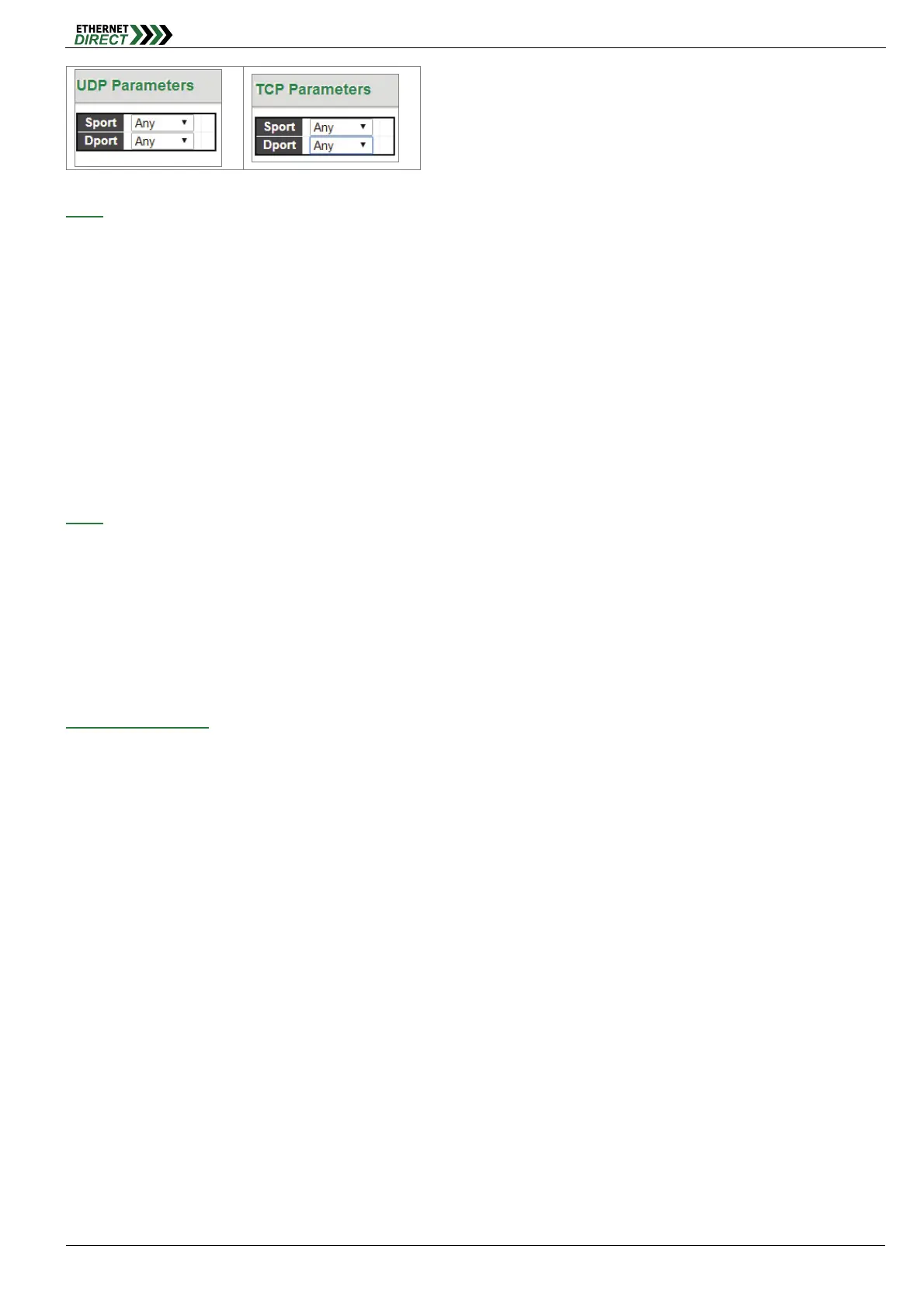QoS
HMG-838PT & HMG-838EPT Web Configuration 18-14
IPv4:
Protocol: IPv4 frame type includes Any, TCP, UDP, Other. If “TCP” or “UDP” is selected, you might further
define Sport (Source port number) and Dport (Destination port number).
Source IP: Select source IP type. By default, any is used. Select “Specific” to indicate self-defined source IP and
submask format. The address and mask must be in the format x.y.z.w where x, y, z, and w are decimal numbers
between 0 and 255. When the mask is converted to a 32-bit binary string and read from left to right, all bits
following the first zero must also be zero
IP Fragment: By default, any is used. Datagrams sometimes may be fragmented to ensure they can pass through
a network device that uses a maximum transfer unit smaller than the original packet’s size.
DSCP: By default, any is used. Select “Specific” to indicate a DSCP value. Select “Range” to indicate a range of
DSCP value.
IPv6:
Protocol: IPv6 protocol includes Any, TCP, UDP, Other. If “TCP” or “UDP” is selected, you may need to further
define Sport (Source port number) and Dport (Destination port number).
Source IP: Select source IP type. By default, any is used. Select “Specific” to indicate self-defined source IP and
submask format.
DSCP: By default, any is used. Select “Specific” to indicate a DSCP value. Select “Range” to indicate a range of
DSCP value.
Action Parameters:
Specify the classification action taken on ingress frame if the parameters match the frame’s content. The actions taken
include the following:
CoS: If a frame matches the QCE, it will be put in the queue corresponding to the specified QoS class or placed in
a queue based on basic classification rules.
DPL: If a frame matches the QCE, the drop precedence level will be set to the selected value or left unchanged.
DSCP: If a frame matches the QCE, the DSCP value will be set to the selected one.
18-12 Storm Control
Storm Control is used to keep a network from downgraded performance or a complete halt by setting up a threshold for
traffic like broadcast, unicast and multicast. When a device on the network is malfunctioning or application programs
are not well designed or properly configured, storms may occur and will degrade network performance or even cause a
complete halt. The network can be protected from storms by setting a threshold for specified traffic on the device. Any
specified packets exceeding the specified threshold will then be dropped.
